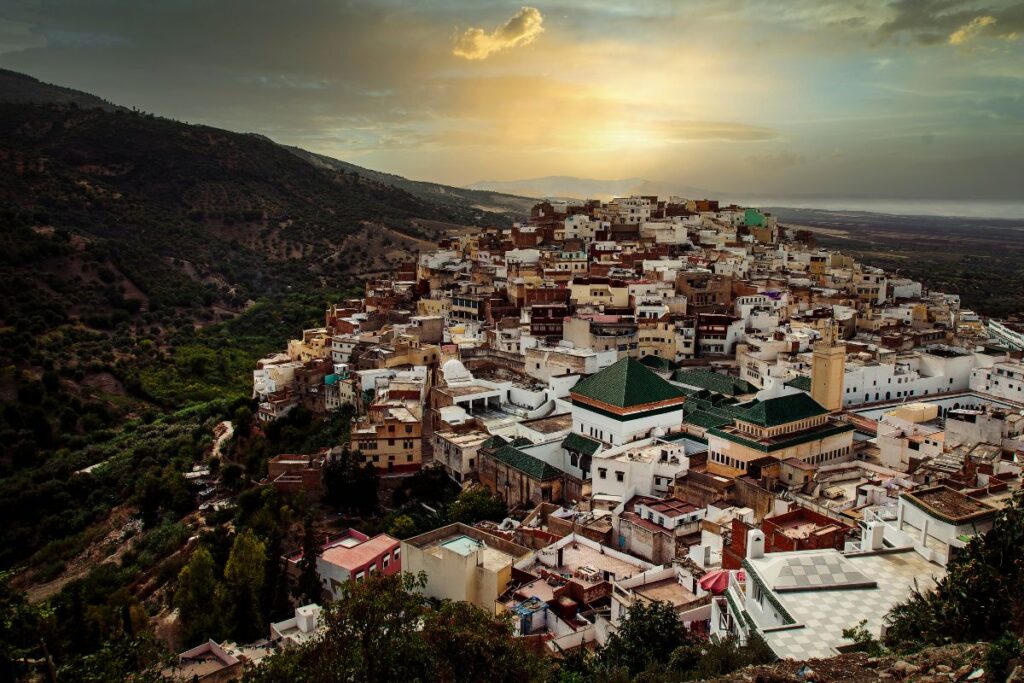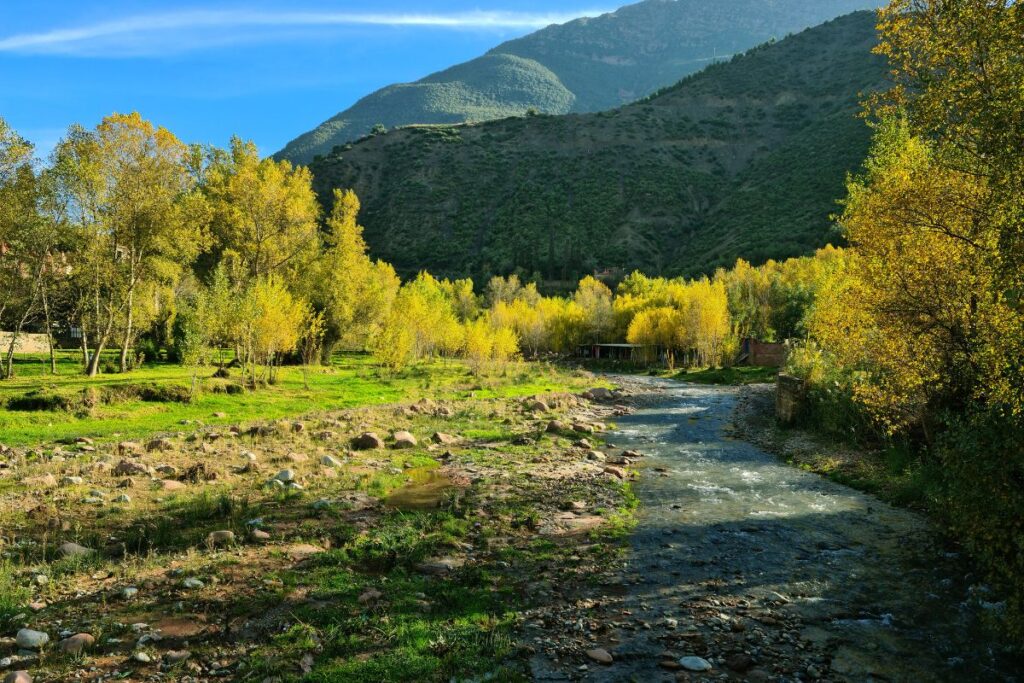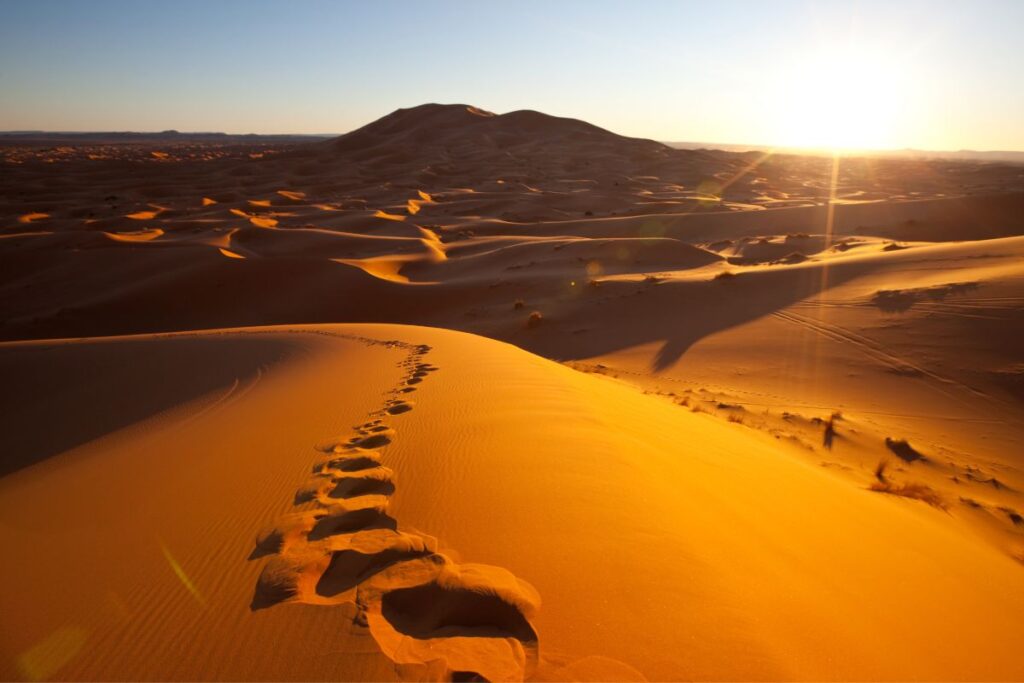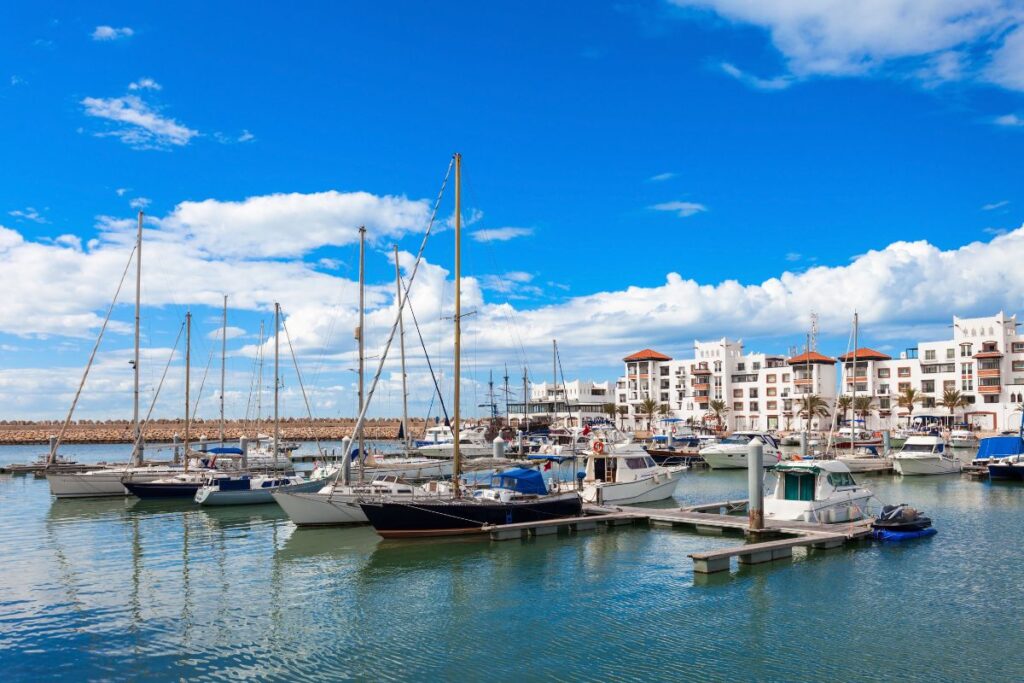
The Weather and Climate in Morocco, The climate of Morocco is a matter to be considered when organizing the trip since it has many climatic zones and extreme temperatures. Therefore, we dedicate this page to the topic, which will serve as an orientation to choose the period of your trip and the city or region to visit.
The climate of Morocco, by zones

Next, we show you the climate of Morocco, grouped by different zones: the Atlantic coast, the northern Mediterranean, the center, and the south.
The Atlantic coast
The Atlantic littoral, which extends to the limits of the Western Sahara, enjoys mild winters while summers are warm. It is a very windy area throughout the year, and the water is relatively cold. Be careful also with the ocean currents. Along the Atlantic coast of Morocco, between May and August, thick fog can invade everything in the morning, dispersing for about 13 or 14 hours. It is a meteorological phenomenon called the “white sky”.
The northern Mediterranean
The northern part of the country has a Mediterranean climate. It can be very hot in the coastal cities at the beginning of spring, while the environment in the Rif is much more relaxed. Chefchaouen suffers a harsh winter and it is common to find a thick fog on mountain roads until late spring.
The center, influenced by the Atlas
The climate in the country’s center is pleasant during winters, but the summers are tough and arid. Much of the population inhabits the foothills of the Atlas Mountains, often covered in snow. The mountains represent good protection against its eastern neighbor, Algeria. The highest peak, Jebel Toubkal, is the highest point in North Africa and is 4,167 meters above sea level. In some surrounding villages, it is not uncommon for snowfall to exceed 1 meter. In fact, in the highest regions, winter can be glacial. In summer, in the mountains, it is hot during the day but cold at night.
The southern desert

Further south, the climate is desert. Here, the temperature oscillations between day and night are more pronounced if possible. Although the maximums exceed 45ºC during the summer days, the winter nights can show two negative digits.
This variety of climatic zones also translates into a wealth of landscapes. High plateaus and fertile plains well irrigated appear between the mountains and the Atlantic coast. In the extreme south, at the edge of the Anti-Atlas, the gorges with flowing rivers at their bases arise, gradually drying up as they enter the endless sand and rocky landscapes of the immense Sahara.
Another characteristic of the climate of Morocco is its temperature oscillations, which can be very large on the same day. The annual average insolation is 8 hours a day in Agadir, Fes, Marrakech, and Ouarzazate, and the average temperature in these cities exceeds 17 ° C. The Chergui is a dry, hot wind that blows from the east and sometimes from the desert, pushing the mercury a few degrees up.
When to visit Morocco

If you are considering when to visit Morocco, everything will depend on the region you want to see. Spring is the best time to visit the country when the trees bloom and the landscapes show all their beauty.
On the other hand, autumn can be an excellent season to visit the imperial cities, whose medinas recover all their vitality after the summer. Also, although the days are shorter, Morocco’s climate is milder during this period. The rainy season runs between November and April but only occasionally rains.
However, suppose you will travel through the regions south of the High Atlas. In that case, it is preferable to do it from October to May since in summer. Temperatures can reach or exceed 45 ° C. Winter skiing is another option valid for the winter months in some regions of the High Atlas, such as the Michlifen ski resort near Ifrane.
During the summer, the most recommendable area to visit is the coastal one, especially the Atlantic one: besides enjoying its beaches, the climate of westernmost Morocco is better supported than the rest of the country. In the north, temperatures are relatively mild. And if you are going to make a trekking trip through the center of the country, we advise you to previously book the accommodation, especially if it is a high season: the one from June 15 to September 15.
What is the climate of Morocco like?
The climate of Morocco is Mediterranean, with mild winters and hot summers.
What is the rainy season in Morocco?
The rainy season in Morocco typically runs from November to April.
Does Morocco experience extreme weather conditions?
Morocco can experience extreme heat in the summer and occasional snowfall in the mountains in winter.
How does the climate vary in different regions of Morocco?
The climate varies significantly depending on the region, with coastal areas having a Mediterranean climate, the Atlas Mountains having a mountain climate, and the Sahara Desert has a hot and arid climate.
What is the sea temperature like in Morocco?
The sea temperature in Morocco varies depending on the season and location, but it can range from around 15°C in winter to 25°C in summer.
Does it rain a lot in Morocco?
It depends on the region, but Morocco generally experiences moderate rainfall. The wettest months are usually between November and March.
What is the hottest month in Morocco?
July and August are typically the hottest months in Morocco, with temperatures averaging around 95°F (35°C).
What is the coldest month in Morocco?
January is typically the coldest month in Morocco, with temperatures averaging around 55°F (13°C).
How does Morocco’s location affect its climate?
Morocco’s location on the coast of North Africa and the Atlas Mountains influences its climate by creating a range of microclimates throughout the country.
How does the climate affect agriculture in Morocco?
The climate in Morocco is generally favorable for agriculture, and the country is known for producing crops like citrus fruits, olives, and grains. However, droughts can have a significant impact on agriculture in some areas.

